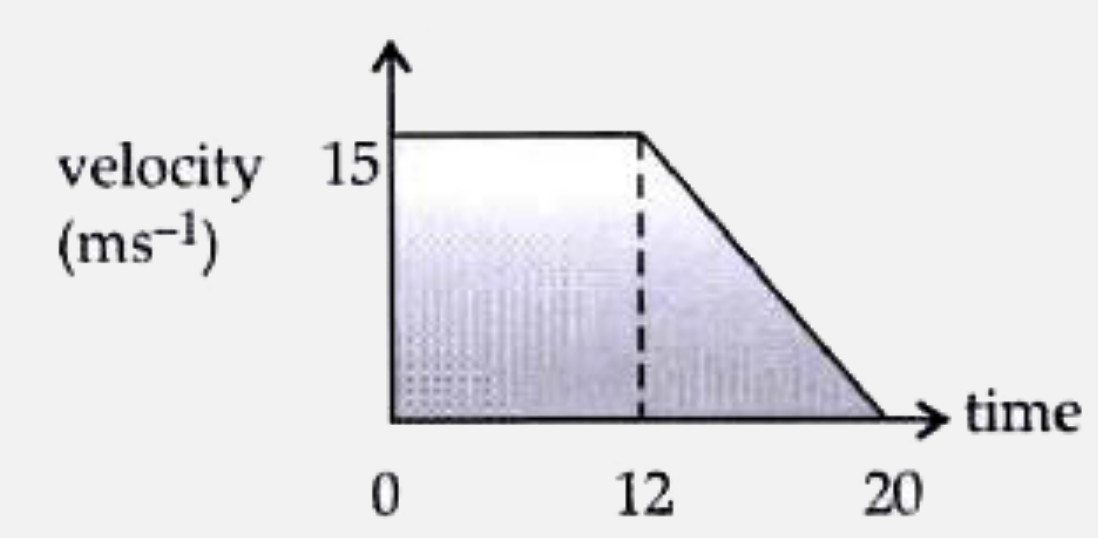The acceleration produced in a body by a force of given magnitude depends on
size of the body
shape of the body
mass of the body
none of these.
The correct Answer is:C
To solve the question, we need to analyze how the acceleration of a body is affected by the force applied to it and its mass. We will use Newton's second law of motion as our foundation.
1. Understand Newton's Second Law of Motion:
According to Newton's second law, the force (F) acting on an object is equal to the mass (m) of the object multiplied by its acceleration (a). This can be expressed mathematically as:
F=m⋅a
2. Rearranging the Equation:
We can rearrange this equation to express acceleration in terms of force and mass:
a=Fm
3. Analyzing the Equation:
From the equation a=Fm, we can see that:
- The acceleration (a) is directly proportional to the force (F) applied to the body.
- The acceleration (a) is inversely proportional to the mass (m) of the body.
4. Conclusion:
Therefore, the acceleration produced in a body by a force of given magnitude depends on both the magnitude of the force applied and the mass of the body.
Final Answer:
The acceleration produced in a body by a force of given magnitude depends on the mass of the body and the force applied to it.
According to Newton's second law, the force (F) acting on an object is equal to the mass (m) of the object multiplied by its acceleration (a). This can be expressed mathematically as:
F=m⋅a
We can rearrange this equation to express acceleration in terms of force and mass:
a=Fm
From the equation a=Fm, we can see that:
- The acceleration (a) is directly proportional to the force (F) applied to the body.
- The acceleration (a) is inversely proportional to the mass (m) of the body.
Therefore, the acceleration produced in a body by a force of given magnitude depends on both the magnitude of the force applied and the mass of the body.
The acceleration produced in a body by a force of given magnitude depends on the mass of the body and the force applied to it.
टॉपर्स ने हल किए ये सवाल
- LAWS OF MOTIONBook:ICSEChapter:LAWS OF MOTIONExercise:EXERCISE - 3(C) (Numericals)
Explore 23 Videos
- LAWS OF MOTIONBook:ICSEChapter:LAWS OF MOTIONExercise:EXERCISE - 3(D)
Explore 17 Videos
- LAWS OF MOTIONBook:ICSEChapter:LAWS OF MOTIONExercise:EXERCISE - 3(C)
Explore 25 Videos
- ICSE ANNUAL EXAMINATION -2020Book:ICSEChapter:ICSE ANNUAL EXAMINATION -2020Exercise:SECTION-II
Explore 45 Videos
- LIGHTBook:ICSEChapter:LIGHTExercise:TOPIC 2 Spherical Mirrors (4 Marks Questions )
Explore 9 Videos
समान प्रश्न
A body of mass 5 kg is moving with velocity 2 ms−1. Calculate its linear momentum.
View SolutionState the usefulness of Newton's third law of motion.
View SolutionName the two factors on which the force needed to stop a moving body in a given time, depends.
View SolutionThe figure below shows the velocity-time graph of a body moving in a straight line.

Find the time interval in which the body is moving with zero acceleration
View SolutionDifferentiate between concave mirror and convex mirror.
View SolutionOne newton force is ……..produce an acceleration of…….in a body of……. .
View SolutionA force produces an acceleration of a_(1) in a body and the same force produces an acceleration of a_(2) in another body. It the to bodies are combined and the same force is applied on the combination the acceleration produced in it is .
View SolutionAssertion : The acceleration produced by a force in the motion of a body depends only upon its mass. Reason : Larger is the mass of the body, lesser will be the acceleration produced.
View SolutionDoes the acceleration produced in a freely falling body depend on the mass of the body ?
View Solutionकोई अचर बल 0.6 kg द्रव्यमान के किसी पिंड में 0.08m/s2 का त्वरण उत्पन्न करता है, तो बल का परिमाण है
View SolutionA force produces an acceleration of a_(1) in a body and the same force produces an acceleration of A_(2) , in another body. If the two bodies are combined and the same force is applied on the combination, the acceleration produced in it is
View Solutionदो पिंडो के बीच गतुत्वार्कषण का बल निर्भर नहीं करता है
View SolutionA force produces an acceleration of a1 in a body and the same force produces an acceleration of a2 in another body. If the two bodies are combined and the same force is applied on the combination, the acceleration produced in it is
View SolutionThe acceleration produced in a body by a force depends only upon its
View SolutionA force produces an acceleration of a_(1) in a body and the same force produces an acceleration of a_(2) in another body. If the two bodies are combined and the same force is applied on the combination, the acceleration produced in it is
View Solution